Tarping at the University of Vermont Horticulture Research and Education Center, Photo Credit: Stephanie Hurley
Overview
Tarping is the practice of applying reusable tarps to the soil surface and removing them prior to planting to manage or terminate weeds, crops, and cover crops. Tarping can facilitate the transition between cash crops with minimal to no soil disturbance. The use of tarps to terminate cover crops in no-till and reduced tillage systems allows farms to achieve the benefits of integrating soil-building practices without specialized equipment or the application of herbicides. Given the logistical challenges of moving, securing, and storing the tarps, they are typically used on small farm operations of less than 5 acres.
Tarping offers numerous climate change adaptation benefits. When used in conjunction with reduced or no-tillage and cover crops, tarping can build soil health, improve water holding capacity, increase infiltration, and reduce erosion and surface runoff. Mulch from cover crop residue can further enhance these effects, while also conserving soil moisture and regulating soil temperatures. Tarps themselves can be used as a moisture management tool during wet periods to prevent soils from becoming saturated and during dry periods to prevent evaporative losses. Additionally, tarps may reduce or eliminate the need to use equipment for tillage, which can be helpful in rainy and wet periods when the soil is too wet to work. This affords farmers more flexibility with respect to the timing of cover crops and plant termination, which is increasingly important in a more variable climate.
Tarps of varying thickness, material, permeability, durability, and size can be used for this practice, including landscaping fabric, billboard (not currently allowed under USDA organic standards) and silage tarps, with a lifespan ranging from 2-8 years. A commonly available silage tarp is 5mil thick and 32ft wide by 100 ft long. Sandbags and cinder blocks are often used to secure tarps and prevent the tarp from blowing loose and becoming a hazard to equipment, animals, and people. At least two people are generally needed to apply, remove, and store tarps, though this may vary depending on tarp and field size as well as weather conditions.
The use of tarping in cover crop and conservation tillage systems is a flexible multi-step process. Integrating the use of cover crops with tarps requires an even stand of cover crops with high biomass. The crop should be laid down before applying the tarp. Rolling is the best method for doing this, as it avoids creating stubble that can poke holes in the tarp as would be the case with mowing. An example of this application of tarping, best suited to transplanted crops, is shown below.
These visualizations are designed to help the viewer picture how the implementation of silvopasture appears in the context of a real New England farm. These images depict the different stages of practice implementation and help the viewer anticipate how silvopasture will appear over time and what implications it may have for the farm. To use these images, please request permission from Stephanie Hurley (stephanie.hurley@uvm.edu).
The use of tarping in cover crop mulch and conservation tillage systems is a flexible multi-step process. One example of this is shown below.
Slide to Implement Practice
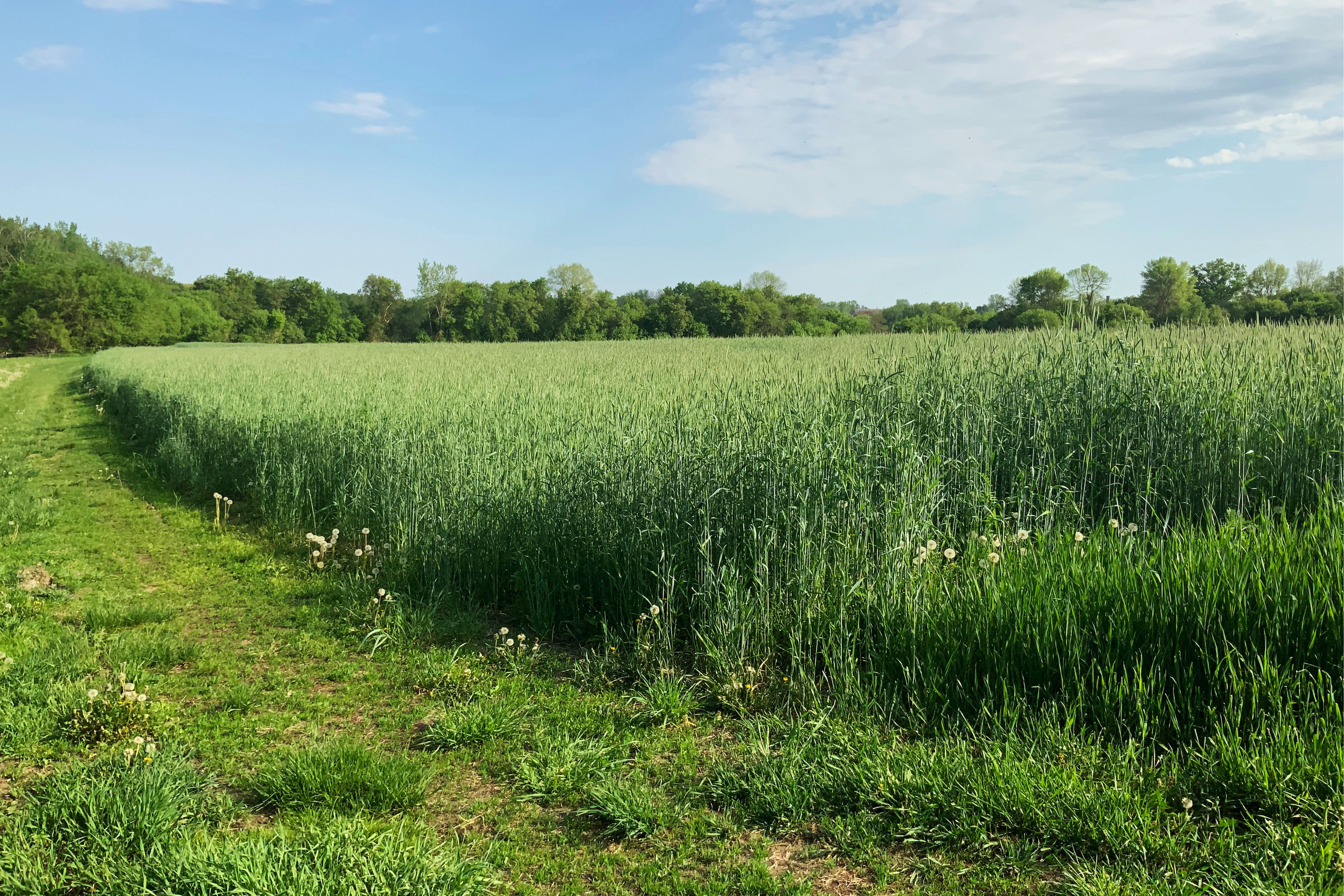
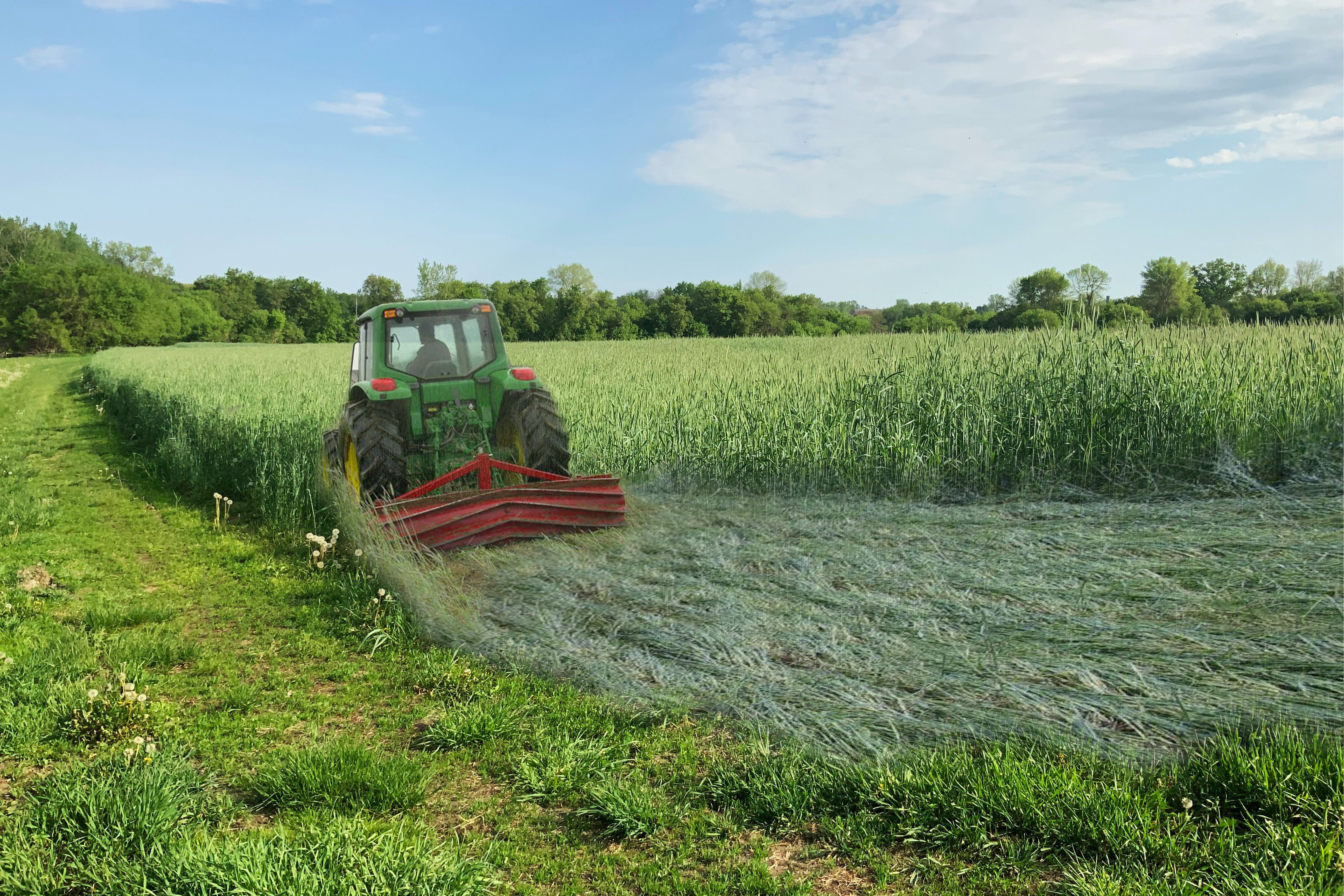
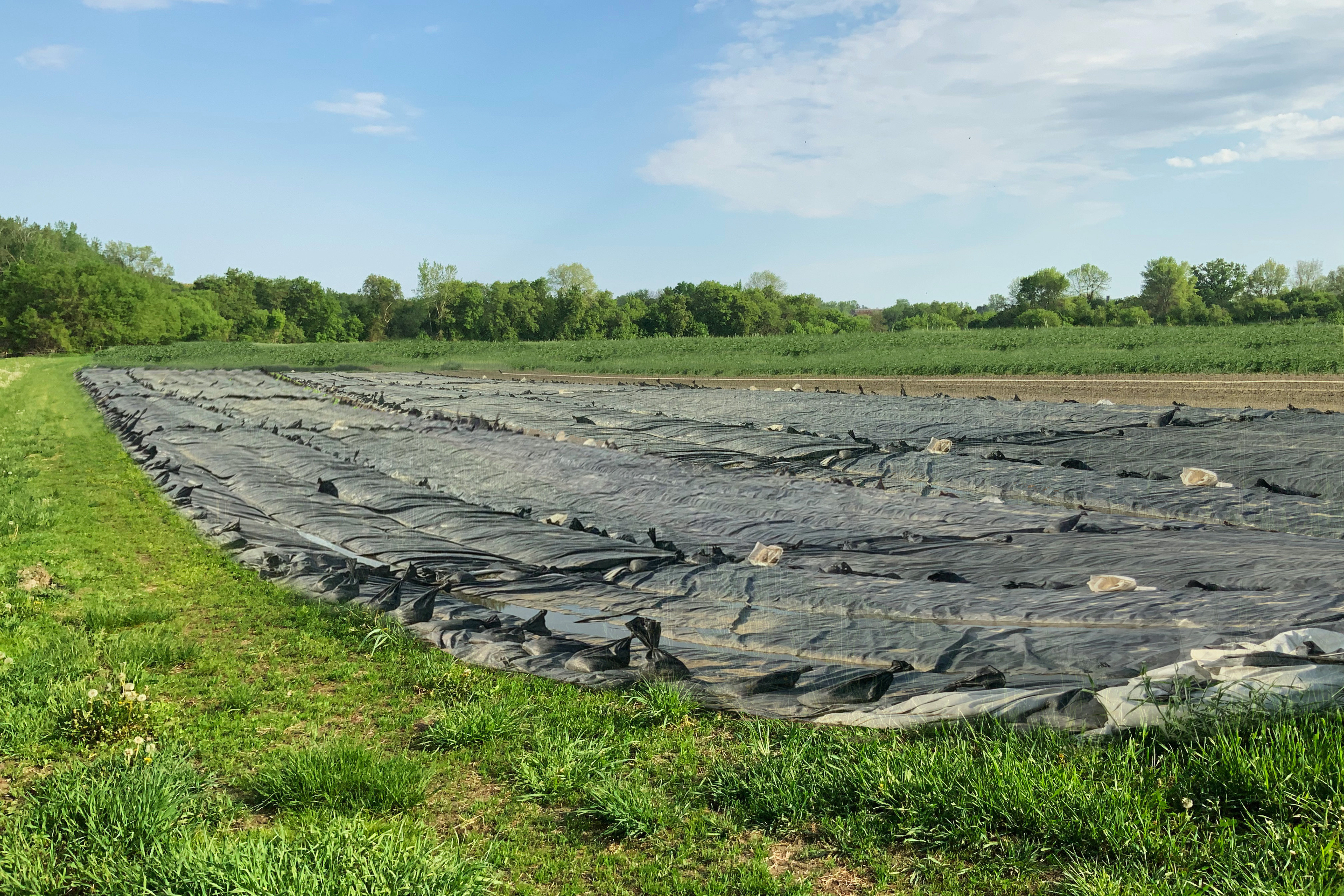
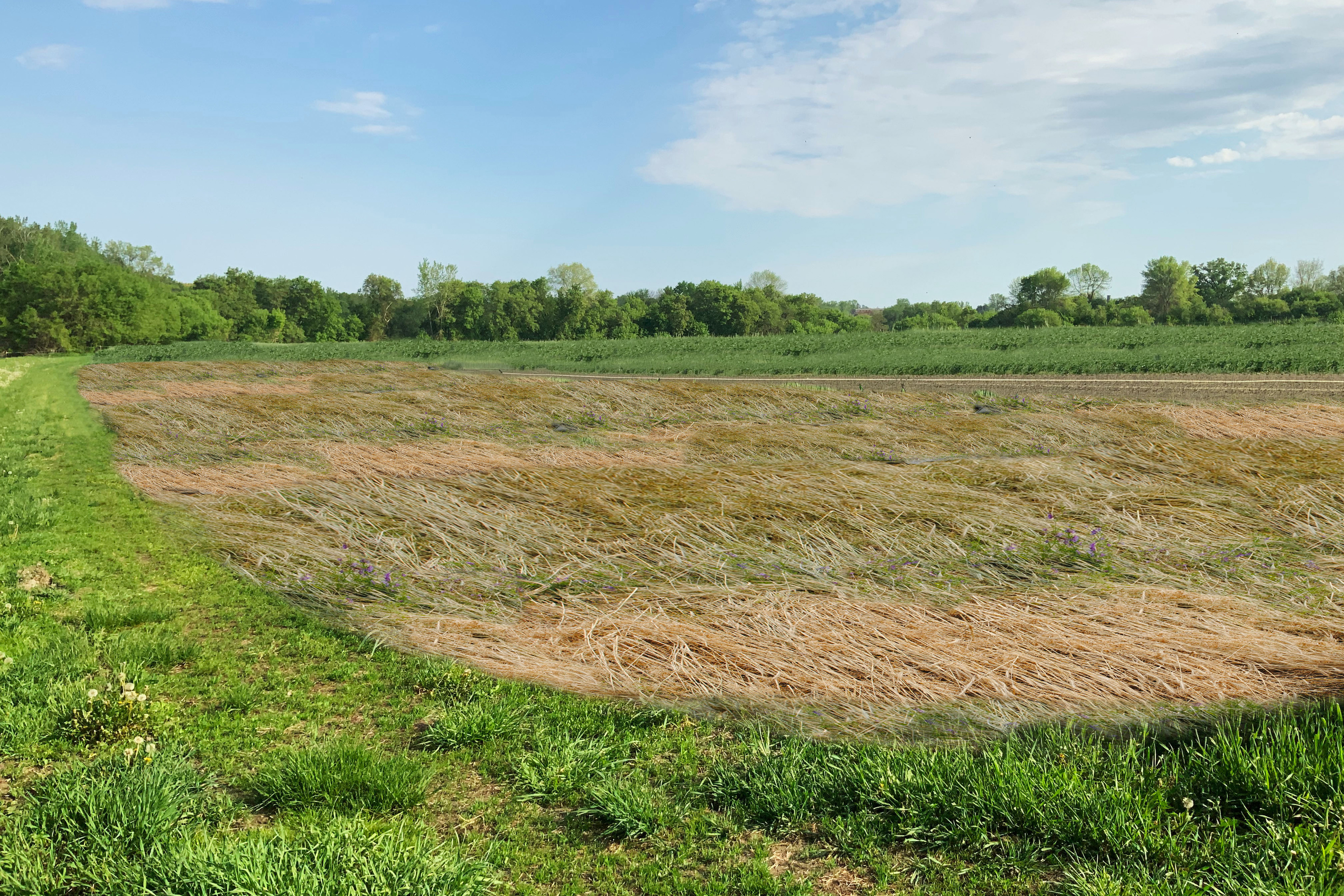
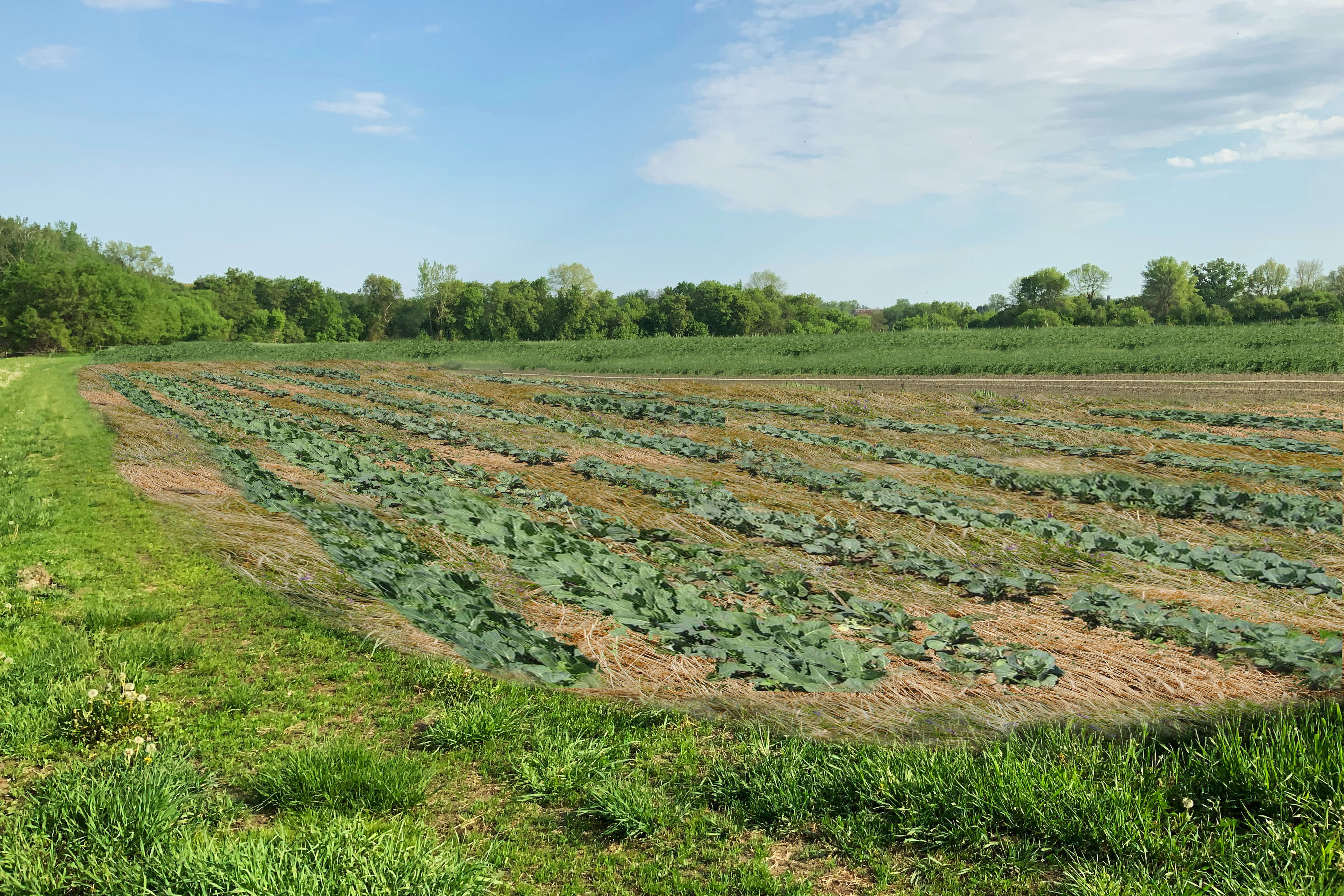
Stage 1: Spring growth of winter rye cover crop planted previous September.
Stage 2: In June, roll down with lawn roller or tractor with roller-crimper to prepare for tarping.
Stage 3: Use black plastic tarps to prepare planting beds and kill weed species. Weigh tarps with sand bags.
Stage 4: Two weeks later: remove black plastic tarps. Then plant vegetable starts in cover crop mulch. Example: Brassica species such as broccoli or kale.
Stage 5: Brassica crop growing within cover crop mulch.
Our team developed this economic tool to assist farmers and their advisors in understanding what the general costs, revenues and profits may be for a farm that implements different climate adaptation practices. A farmer or advisor can input farm-specific data using the estimator to generate a general understanding of many of the economic costs associated with implementation of a practice. Data for the various costs associated with a practice are detailed in a specific practice, as well as the costs considered. This tool should be considered a guide towards better understanding the range of costs for implementation across these practices, and should be used in conjunction with our other tools and technical advisors to better understand the specific opportunities and challenges for implementation on any given farm.
Tarping in the Northeast: A Guide for Small Farms, University of Maine Cooperative Extension, 2022, Natalie Lounsbury, Sonja Birthisel, Jason Lilley, Ryan Maher
Manage Weeds With Tarping, Reduced Tillage in Vegetables Project, Small Farms Program, Cornell College of Agriculture and Life Sciences, July 15, 2019, Ryan Maher
Reusable Black Tarps Suppress Weeds and Make Organic Reduced Tillage More Viable, Reduced Tillage in Vegetables Project, Small Farms Program, Cornell College of Agriculture and Life Sciences, January 14, 2019, Haley Rylander
Take Me Out to a Tarped Field, Reduced Tillage in Vegetables Project, Small Farms Program, Cornell College of Agriculture and Life Sciences, April 6, 2018, Ryan Maher
Small Scale No-Till Vegetables at Seeds of Solidarity Farm, Reduced Tillage in Vegetables Project, Small Farms Program, Cornell College of Agriculture and Life Sciences, October 3, 2016, Brian Caldwell and Ryan Maher
Silage Tarps to Reduce Tillage on Small Farms: Farmer Experiences, Reduced Tillage in Vegetables Project, Small Farms Program, Cornell College of Agriculture and Life Sciences, Dec 20, 2018
No-till and Cover Crops in Vegetable Systems with Natalie Lounsbury, Recorded Webinar, April 6, 2020
Reduced Tillage on Permanent Beds, Webinar in “Reduced Tillage Webinar Series” hosted by Cornell RT, Michigan State University, and the University of Maine. Ryan Maher and Brian Caldwell, Cornell University, Mark Hutton, University of Maine, Thursday, March 9, 2017.
Lounsbury NP, Warren ND, Wolfe SD, Smith RG (2018). Investigating tarps to facilitate organic no-till cabbage production with high-residue cover crops. Renewable Agriculture and Food Systems1–7.
Mays, Daniel. The No-Till Organic Vegetable Farm: How to Start and Run a Profitable Market Garden That Builds Health in Soil, Crops, and Communities. Storey Publishing, LLC. November 10, 2020. ISBN-10: 1635861896.
Acknowledgements
Research Team:
Principal Investigator: Meredith Niles.
Co-Principal Investigators: Dr. Adam Daigneault, Dr. Nick Cheney, Dr. Joshua Faulkner, Dr. Eric Gallandt, Dr. Stephanie Hurley, Dr. Rachel Schattman.
Additional Team Members: Dr. Sonja Birthisel, Dr. Bradford Demarest, Tim Harrold, Beth Holtzman, Carolyn Hricko, Erin Lane, Ruthie Clements, Devon Johnson, Thomas Wentworth.
We thank the following contributors for their expert review of the agricultural practice materials and website:
Natalie Lounsbury, PhD, Postdoctoral Research Associate, University of New Hampshire Department of Agriculture, Nutrition, and Food Systems
Ryan Maher, Research and Extension Specialist, Cornell Small Farms Program, Cornell University
Visualization design
and creation
Holly Greenleaf, Greenleaf Design LLC
